Don't you just love it when a plan works? I do. Last week, looking at the weather forecast, I spotted the magic word "rain" predicted for Tuesday August 24. And Huey the Rain God didn't let us down. The rain started late yesterday and it's still raining.
A creature of gardening habits, I knew that the weeks spanning the end of August and the beginning of September are the ideal time to fertilise my citrus trees, so it was always at the top of my "to-do" list. All I needed was to wait for a good day of rain to come along, because that way the rain will water in the many handfuls of fertiliser I scattered around my Eureka lemon, Tahitian lime and Thai Makrut lime trees.
While I was at it and had plenty of fertiliser to spare, I scattered it around all manner of other plants that could do with a boost in spring, but the main game was feeding citrus. If you have a lemon, lime or other citrus tree in your garden, try to get out there over the next few days (showers are forecast through to the weekend) and your citrus trees will reward you with bumper crops.
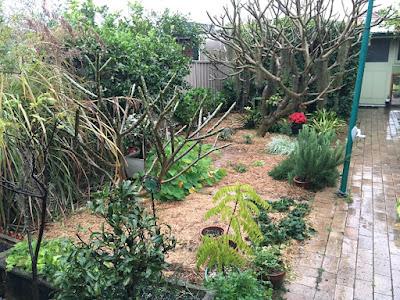
I love a shiny footpath and water dripping off foliage. It means I have a day off from watering the garden, and I can watch the rain do the last stage of fertilising for me.

Both the lemon tree (pictured) and the lime are covered in flower buds right now, so a big feed is all they need to turn flowers into fruit.
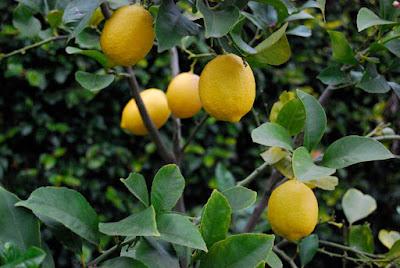
The Eureka lemon is the ideal variety for Sydney gardens. In cooler climates the Lisbon variety is preferred, while the Meyer lemon is great in pots in all climates.
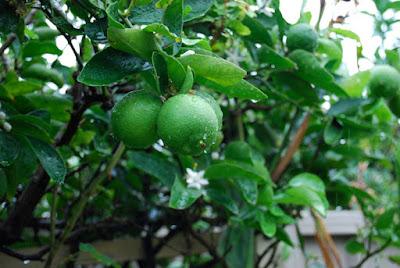
As is the Tahitian lime the ideal one for Sydney.
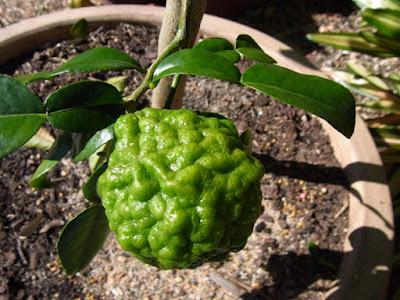
And this wrinkled weirdo is the Thai Makrut lime (also called the Kaffir lime), whose culinary value lies in the grated rind of the fruit (it produces hardly any juice), and the wonderfully aromatic foliage, which I toss into all sorts of South-East Asian curries and stir fries. The Thai lime is a great choice for pots, too, because it's naturally quite small.
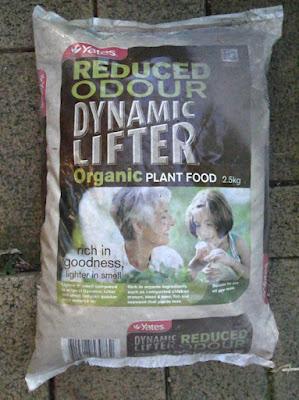
This is my preferred citrus food not only because it's organic-based and the smelly aromas don't last long. It just happened to be what I had in the shed.
Right now it's hard for locked-down gardeners everywhere to visit one of those big Hardware superbarns such as Bunnings. I actually bought my Dynamic Lifter a while back at my local Woolworths Supermarket, so try there if you don't have any in your garden shed at the moment.
There's also a small but well run local garden center which I support by paying a bit more for the mulch, fertiliser, plants and seeds they stock, and it's still open. So maybe there's a small garden center near you that is still open, or at least open for a click-and-collect shopping expedition?
In these difficult times, it doesn't really matter what you feed you citrus trees with. Almost any fertiliser I can think of is better than no fertiliser at all. If it says something about "fruit and flowers" then this is the good stuff, but even if the fertiliser just says "general purpose" you are in the citrus-feeding business.
Try to read the instructions on the pack before you get started. If you do your fertilising now, while the ground is wet and more showers are forecast, all you need to do is wait for a break in the rain, get out there like a mad person, laugh at the sky if the neighbours are watching, and scatter the fertiliser around the base of the tree.
Don't direct the fertiliser at the tree trunk itself — there's no roots there. Instead, spread it out under the whole canopy of the tree, and especially around the ground directly below the outer edge of the canopy (that's called the 'dripline', because that's where most of the rainwater drips onto the ground).
The dripline area is where a healthy tree has oodles of roots. Direct your fertiliser there and let Huey the Rain God do the rest.
And after you've done the job and the poor locked-down neighbours with nothing to do are still watching, permit yourself to send one last chuckle skywards. All your gardening mates will know exactly how you feel.
